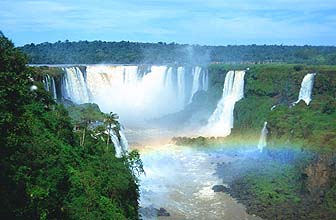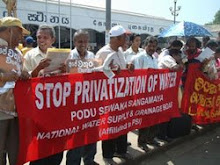
As you scale the geographical borders of Paraguay, absorb the natural world while thinking about the year 1811 when this country achieved its independence and fell under a continued chain of oppressive, violent dictatorships. Take a deep breath and let the impact of the frequent, bloody wars that Paraguay has been involved in with its surrounding neighbors. The air is so fresh out here.
Take a Taxi Ride!
On the way to the waterfront you can enter the old part of town, an area of architectural diversity. There are many parks and plazas left over from the Spanish grid system that colonized areas were built upon. How nice…


 During the first 60 years of independence, Paraguay was governed by three dictators. Francisco López, Paraguay’s third dictator, waged war against Uruguay, Brazil, and Argentina in 1865–1870 In this conflict, half the male population was killed. A new constitution was written in 1870, designed to prevent dictatorships and internal strife was unsuccessful until 1912. It was in that year that a period of comparative economic and political stability begin. However, the Chaco War (1932–1935) with Bolivia won Paraguay more western territory.
During the first 60 years of independence, Paraguay was governed by three dictators. Francisco López, Paraguay’s third dictator, waged war against Uruguay, Brazil, and Argentina in 1865–1870 In this conflict, half the male population was killed. A new constitution was written in 1870, designed to prevent dictatorships and internal strife was unsuccessful until 1912. It was in that year that a period of comparative economic and political stability begin. However, the Chaco War (1932–1935) with Bolivia won Paraguay more western territory.
After World War II, politics became particularly unstable. Alfredo Stroessner was dictator from 1954 until 1989, during which he was accused of the torture and murder of thousands of political opponents. Despite Paraguay's human rights record, the U.S. continuously supported Stroessner. (Of course…)


This gives you a little more insight on to the type of leadership and government that has been established in Paraguay—Keep this mini-history lesson in mind as we explore the volatile human rights issues facing Paraguay, and in particular: Asuncion, Paraguay’s capital and largest city.
So as you pack up your backpack and check to see that you have your plane tickets to this scenic hot spot, browse through some more historical background, and create the TRUE picture of Paraguay in your mind—the Lonely Planet Guidebook will only present to you one side of this amazing country.
On the way to the waterfront you can enter the old part of town, an area of architectural diversity. There are many parks and plazas left over from the Spanish grid system that colonized areas were built upon. How nice…

A good view of the city can be had from the Parque Carlos Antonio Lopez high above Asunción. The Botanical Gardens are situated in a former estate of the Lopez family on the Paraguay River, definitely worth a visit. There is also a golf-course and a small zoo. Yay! The Lopez Residence has been converted into a natural history museum and library, so you can get your read on.
Now let’s back up… Who is Paraguay?

Let's Look! (Techno Version!)
Indians speaking Guaraní—the most common language in Paraguay today, after Spanish—were the country's first inhabitants. In 1526 and again in 1529, Sebastian Cabot explored Paraguay when he sailed up the Paraná and Paraguay rivers. From 1608 until their expulsion from the Spanish dominions in 1767, the Jesuits maintained an establishment in the south and east of Paraguay. In 1811, Paraguay revolted against Spanish rule for independence and became a nominal republic under two consuls.
After World War II, politics became particularly unstable. Alfredo Stroessner was dictator from 1954 until 1989, during which he was accused of the torture and murder of thousands of political opponents. Despite Paraguay's human rights record, the U.S. continuously supported Stroessner. (Of course…)
Stroessner was overthrown by army leader General Andres Rodriguez in 1989. Rodriguez went on to win Paraguay's first multicandidate election in years and thus, Paraguay's new constitution went into effect in 1992. In 1993, Juan Carlos Wasmosy, a wealthy businessman and the candidate of the governing Colorado Party, won a five-year term in free elections.

Raúl Cubas Grau was elected president in May 1998. In 1999, he was forced from office for his alleged involvement in the assassination of Vice President Luis María Argaña. The vice president had criticized Cubas for refusing to jail his mentor, General Lino Oviedo, who had been convicted of leading a failed 1996 coup against Wasmosy.
Luis Ángel González Macchi, appointed caretaker president after Cubas stepped down, was accused of mishandling $16 million in state funds, and former journalist Nicanor Duarte Frutos became president on Aug. 15, 2003. -->
He has pledged to clean up the pervasive corruption in his nearly bankrupt country. Paraguay has been in a protracted recession since the late 1990s.
Luis Ángel González Macchi, appointed caretaker president after Cubas stepped down, was accused of mishandling $16 million in state funds, and former journalist Nicanor Duarte Frutos became president on Aug. 15, 2003. -->
He has pledged to clean up the pervasive corruption in his nearly bankrupt country. Paraguay has been in a protracted recession since the late 1990s.

This gives you a little more insight on to the type of leadership and government that has been established in Paraguay—Keep this mini-history lesson in mind as we explore the volatile human rights issues facing Paraguay, and in particular: Asuncion, Paraguay’s capital and largest city.
So as you pack up your backpack and check to see that you have your plane tickets to this scenic hot spot, browse through some more historical background, and create the TRUE picture of Paraguay in your mind—the Lonely Planet Guidebook will only present to you one side of this amazing country.
-L


No comments:
Post a Comment